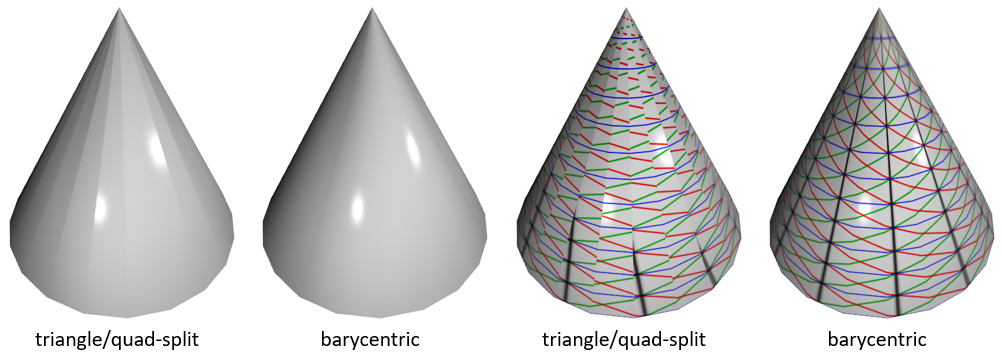
by C.G. Scoop
 |
by C.G. Scoop Sept.,
2022
|
Last month, shortly after the Journal of
Computer Graphics Techniques published Barycentric
Quad Rasterization, Paul Haeberli asked whether the barycentric
method, which reduces distortion and discontinuity in a texture-mapped
sphere, could also improve the rendering of a cone? Yes, it can.
At the tip of a cone, as at a pole of a sphere, a quad has a degenerate
edge defined by two coincident points (see Figure 6 of the paper). With
triangle rasterization, one of the points is ignored (see Figure 7). For
the sphere, the two points differ in uv-coordinates and thus triangle
rasterization produces a texture discontinuity. For the cone, however, the
two points also differ in surface normal, producing a shading
discontinuity as well. This problem is discussed by Eric Haines in his
2014 post, Limits
of Triangles.


The cone example revealed a bug in the pixel shader (Listing 2). In
subroutine BarycentricWeights, the following assignment fails if A is
zero:
t[i] = (r[i]*r[(i+1)%4]-D)/A;
It should be replaced with:
t[i] = abs(A) < 1.e-6? 0 : (r[i]*r[(i+1)%4]-D)/A;
This correction removes the need for double precision in the subroutines
BarycentricWeights and UV (thus, p. 73, “Double precision is used ...
artifacts” is incorrect).